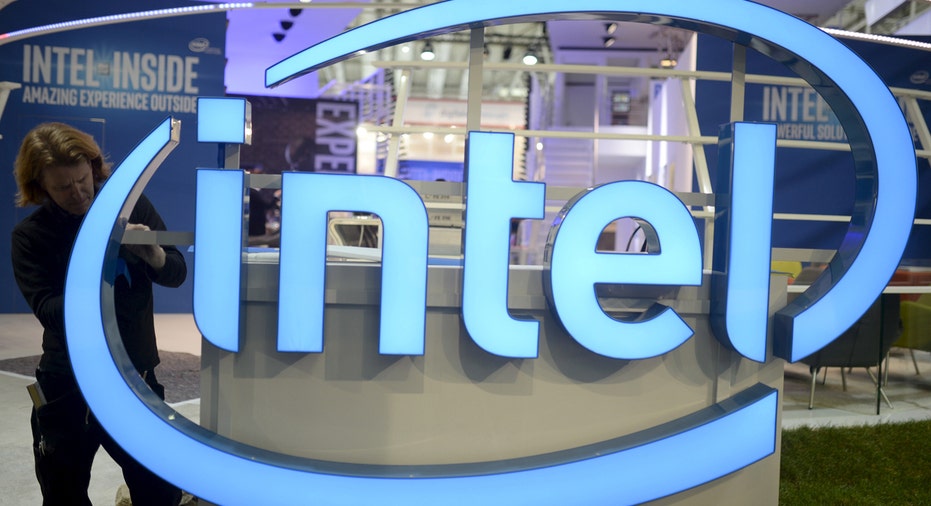Intel Restructuring: Why This Elephant Can't Dance

When Intel announced quarterly earnings and plans to layoff 12,000 workers earlier this week, it set off a chorus of analysts who likened the chip giant’s ongoing diversification to teaching an elephant to dance – a nod to Lou Gerstner’s miraculous turnaround of IBM back in the 90s.
I’d love to join in on all the backslapping fun, but the analogy isn’t just wildly premature; it’s ludicrous on its face. To me, Intel looks more like an elephant moving at a snail’s pace. And while I think the restructuring is warranted to help speed things up, there are bigger issues than a massive layoff can address.
Don’t get me wrong; the company is doing a fabulous job of treading water in a declining PC market. Its execution in keeping revenues and margins flat as it attempts to transform its business beyond the PC has been flawless. That may actually turn out to be a double-edged sword, but we’ll come back to that later.
In any case, that’s where the good news ends. The company’s transition strategy is neither bold nor differentiated. And when you look at the data, Intel is still fundamentally the same company it’s always been. Not much has materially changed. And both issues are concerning.
CEO Brian Krzanich’s strategy of "evolving from a PC company to one that powers the cloud and billions of smart, connected computing devices" may sound awesome on paper, but it’s actually just an old legacy business and a whole lot of smoke and mirrors.
Intel’s cloud computing platform consists primarily of Xenon processors for servers, which it’s been doing for years. As for those billions of smart devices, they’re nearly all powered by ABI: Anyone But Intel. The market couldn’t be more fragmented.
If you pull out your trusty calculator and dig into the numbers, you’ll find a startling fact: The only business that’s really new at Intel, its Internet of Things Group or IOTG, was a paltry 4.7% of the company’s total revenue compared with 4.1% during the year ago quarter. At this rate, it’ll be relevant sometime around 2030.
The vast majority of the company’s sales last quarter – 84% to be exact – was still derived from processors and related chipsets for PCs and Servers. The remainder comes from Flash memory and the McAfee and Altera acquisitions. In other words, Intel’s business is almost entirely status quo. Where’s the diversification?
While cloud and IOT are the right target markets, the strategy is more than a little light on differentiation. Intel may be a chip giant, but the platforms it once dominated are declining rapidly and the new markets it’s embracing are wildly fragmented. The old competitive advantage no longer applies and who knows what the new ones might be.
Look at it this way. Intel’s success was built on designing a relatively few general-purpose processors and selling gazillions of them into essentially two markets, PCs and servers. Its high profit margins reflect those economies of scale. But those billions of smart, connected devices represent thousands of unique, custom designs. Intel will have to compete for each and every one, and that’s simply not in its DNA.
Perhaps you’re beginning to see why I bristle at the mention of dancing elephants. Gerstner’s transformation of IBM was primarily cultural. While it’s true that Intel desperately needs to change its culture to survive, no change is evident. At this point, everything’s more or less the same, minus 12,000 jobs over the next year or so.
The second part of IBM’s turnaround was strategic. Gerstner transformed Big Blue’s business from computing to an integrated provider of IT consulting services and software. It was an aggressive, unique and differentiated strategy. And that, coupled with the culture change, is why it worked.
Which leads us to the double-edged sword I mentioned earlier. You see, IBM was close to bankruptcy when the board brought in Gerstner. The former RJR Nabisco and American Express executive was a bold choice for the tech giant, but it was a last ditch effort to avoid breaking up the company and selling it in pieces.
IBM was truly a turnaround. There was nothing left to lose. That’s what gave rise to a brilliant strategy and gut-wrenching cultural change. That’s why it worked. That’s why the Big Blue elephant could dance.
It’s more than a little ironic, but Intel is simply in too good a shape to warrant bringing in an outsider, throwing caution to the wind, coming up with some crazy new strategy and changing its culture. That’s why its culture and business remain stuck in the past. And that’s why this elephant can’t dance.



















